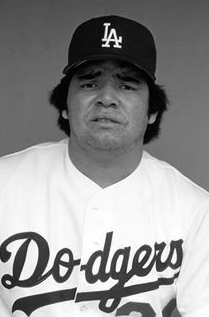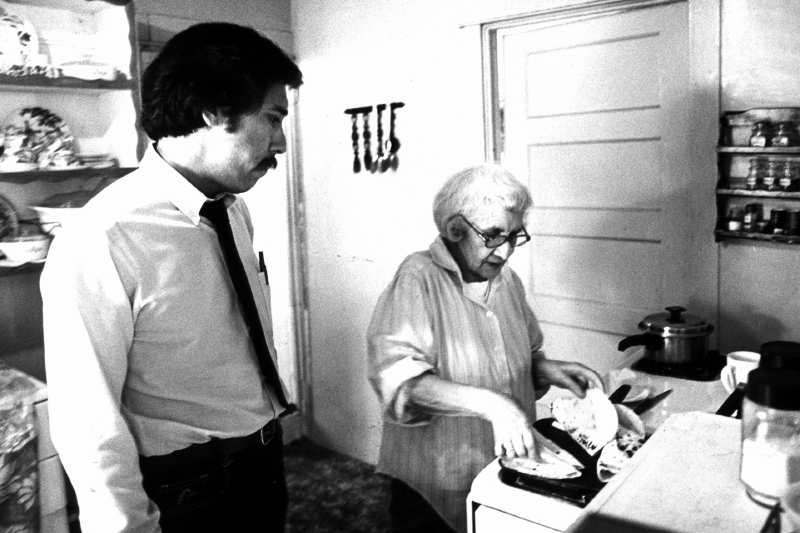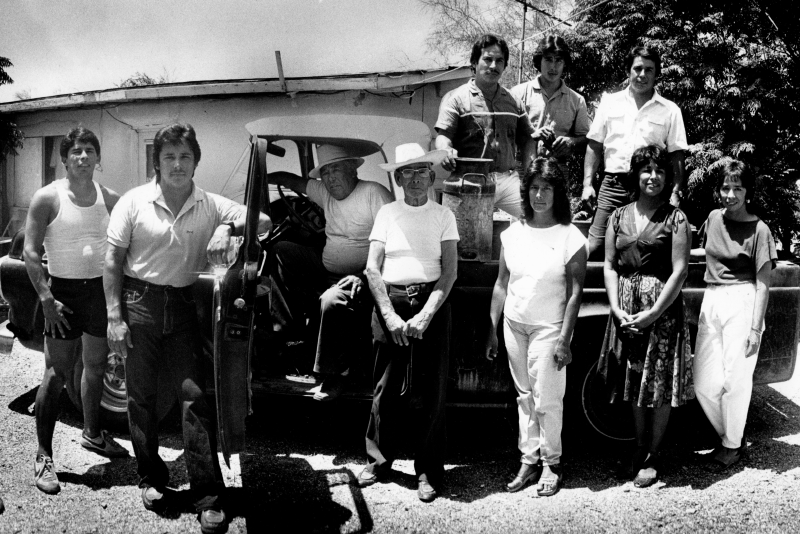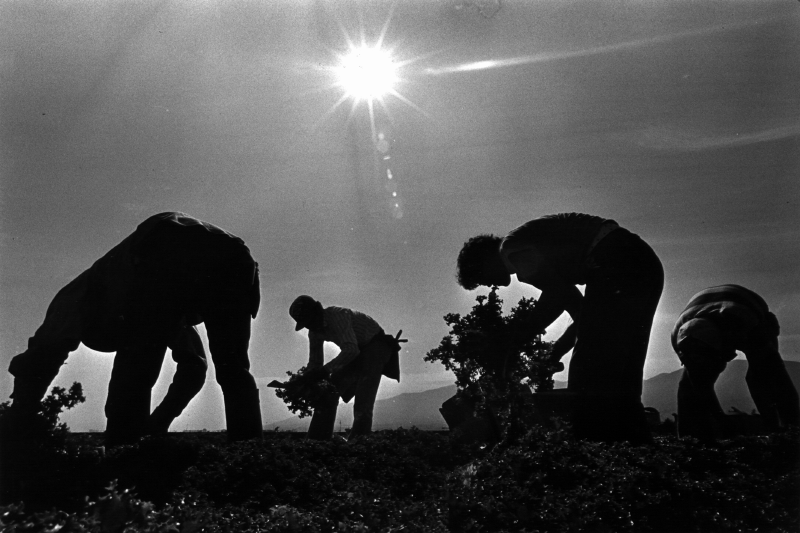(Continued)
Pressure and tension mount
Almost every reporter, wanting to “say it all,” included too many anecdotes and details in initial drafts of stories. That’s when the editor’s role became vital. A good editor condenses flabby sentences and chops unneeded details, much as a gardener prunes branches to grow strong trees.
Ramos and I took the first shots at editing series stories. Then we’d transfer them to Greenwood. A master editor, he could quickly discern what worked and what didn’t. He could squeeze a sentence of 25 words into 20 and not lose a thing. After editing, some stories were half their original length, with essential themes intact and sparing the reader superfluous details.

All of us on the team placed enormous pressure on ourselves to produce journalism that was not only good but extraordinary. We regularly worked six days a week and sometimes seven. We all felt the strain and made personal sacrifices.
“The pressure was heavy, intense, and the atmosphere in the newsroom felt as if the rest of the staff expected us to fail,” recalled Virginia Escalante.
One veteran reporter turned cynic and asked: “When can we expect to see this debacle?” Some staffers poked their heads into our office and quipped: “What are you guys doing in here: Taking a siesta?” Kidding around is routine in the newsroom, but the ethnic “humor” was biting. At the same time, Greenwood and upper management continued to offer full support.
Discussions and flaring tempers
Recalling the pressure-cooker atmosphere of those days, Marita Hernandez wrote in a recent email:
“It wasn’t always smooth sailing. As in any group, there were varied perspectives, some tugging and pulling, even conflicts. It became immediately clear that as individuals we were nearly as diverse as the community we would attempt to reflect in our stories. Some of us grew up in the barrios of Los Angeles, Arizona or Texas, or recalled summers working the fields, picking fruit or picking cotton. Others grew up in blue-collar or middle-class neighborhoods of L.A.; I spent my formative years in Mexico City.
“At times, discussions ended in flaring tempers or confrontations as the group struggled to refine our direction. However, by challenging preconceptions and bouncing ideas off each other, we strengthened our collaborative effort. We also profited from the camaraderie that developed, the support and encouragement freely offered and the inspiration we drew from each other’s experience as Latinos.”
Photographer Monica Almeida, one of the youngest of our group, recalled: “During the team meetings, I would sit on the periphery and listen to the banter and jokes, the stories and sometimes the arguments. But what we all shared was a strong sense of working from a place deep in our hearts, a labor of love.”
Yes, there were millionaires
Al Martinez was a consummate professional: He ran with the story idea about Mexican American millionaires and quickly put together a good read with all his stylistic phrasing in evidence. Here is Martinez’s lead paragraph:
Dan Peña, arms swinging, fingers snapping, strode down the polished corridor of an oil company headquarters in west Texas with the intensity of a matador entering the bullring. You could almost hear the trumpets.
His story also featured a high-tech entrepreneur and well-known Hollywood cinematographer John A. Alonzo, whose credits included “Chinatown,” “Norma Rae” and “Lady Sings the Blues.” Martinez’s piece delivered a solid counterpunch to the stereotype of Mexican American as poor and unsuccessful. “I am paid $10,000 a week,” Alonzo told Martinez, “and am offered more movies than I can possibly accept.”
“The few and far between”
David Reyes wrote the article headlined “Latino Heroes: the Few and Far Between.” Reyes, a Los Angeles native, had worked on papers in northern San Diego County before graduating from the 1976 Summer Program at UC Berkeley.
“I thought we needed a story that examined the concept of the ‘who’ and ‘why’ of Latino heroes,” Reyes said. Were Latinos starved for heroes? Did they tend to admire primarily entertainers? Without the L.A. Times Poll results, we would have been left with guesses.

Only one of eight Latinos in the poll cited a person they admired most. Heading the list were Pope Paul II and President Reagan. Tied for third were Dodger pitcher Fernando Valenzuela and Britain’s Queen Elizabeth, who was visiting California at the time. When Latinos were asked to identify a “hero” from their own ethnic group, they chose farmworker leader Cesar Chavez, TV “Fantasy Island” actor Ricardo Montalbán and Valenzuela. L.A. Latinos showed a particular admiration for Valenzuela, who was born poor in a tiny Mexican town. “He’s one of us” who made good, said an East L.A. butcher. Of course, Valenzuela was also admired and loved by millions of non-Latino Dodger fans. “Fernandomania” had exploded in L.A. in 1981, when Valenzuela won both the Cy Young award and Rookie of the Year. Other than Chavez, Montalbán and Valenzuela, no other Latino stood out in the Times Poll.
Discussing the scant number of recognized Latino heroes, Armando Morales, a UCLA psychology professor, blamed books, magazines, films and other media for “omitting the positive roles that Chicanos have played in society.”
In interviews, Reyes recalled, “many Latinos said their heroes were people close to them, such as a dedicated mom or dad” or a community hero. With the help of Metro executive news editor Terry Schwadron and the art department, we put together a large graphic with some “unsung heroes,” including East L.A. math teacher Jaime Escalante of “Stand and Deliver” movie fame.
Raised in east L.A.
For his story, L.A.-born George Ramos went back to live in his boyhood home, then occupied by his 80-year-old grandmother, Felicitas Ramos. He wanted to feel the vibe of East L.A. again as he started to write his first-person account of growing up there.
Ramos’ piece was a mixture of insights, humor and sentimentality. He wrote about going to an elementary school once attended by Anthony Quinn and of being punished for speaking Spanish. Ramos described an area that was poor and splashed with graffiti, but he said that, at its core, its residents were not much different from Americans anywhere.

I loved the story when he passed it over to me for editing. The parts about George’s grandma struck close to my heart, reminding me of my own parents and my nana. My main advice to Ramos: “More grandma!”
Ramos took the story back, added more material with human touches and produced an even richer account that found resonance with many readers. Ramos wrote lovingly of “Grandma’s routines,” such as draping clothes to dry over an open oven or constantly asking her grandson, “Are you hungry?” And, of course, Grandma never missed her favorite soaps on TV.
“I’ve never understood how a person with such limited English ability can give a running commentary in Spanish of ‘Days of Our Lives,’ ” Ramos wrote. “But she does.”
Working in the fields
Virginia Escalante found abundant parallels with her own experiences when she journeyed back to the fields to investigate the conditions for California farmworkers, almost all of them Mexican nationals or Mexican Americans. Escalante had grown up in the small town of Eloy, Arizona. Each summer, her whole family would climb aboard a 1957 Ford pickup and head to the fields of California, where they might pick onions in Wasco, garlic in Gilroy, tomatoes in King City, plums in Corning, apples in Watsonville or strawberries in Salinas.

“I wanted to see what, if anything, had changed since I had worked in the fields,” Escalante said. She found some visible improvements, such as the right to engage in collective bargaining. “In other ways,” she wrote, “it was as if time had stood still.”
“The first time I wrote the story, it was no different from other reportage on farm workers with facts, interviews, quotations and the distant, ‘objective’ voice. I knew it wouldn’t do and that I would have to interject my own experience in order to truly compare the past with the present and make it unique. So, on the second draft, I interspersed some limited bits about my personal experience. When I read that version, I knew I’d have to be more self-revelatory. So I plunged in and did my best to relate my family’s experience.”

You could almost feel the pain experienced by farmworkers in Escalante’s descriptions. Here’s a sample:
“We were stooping, kneeling or standing all day, dragging or lifting heavy sacks, large buckets or crates in vineyards, orchards and fields. Since we were paid at the piece rate, we picked as fast as we could.… By sunset, our hair and clothes were full of dust, our hands and knees sore and bodies drained. At night when we were asleep, we sometimes moaned like wounded soldiers in a hospital, my grandfather once told me. The next day we did it all over again, getting out of our warm beds at 3 a.m. when it was still dark and we were still tired.”
It was no surprise that Virginia’s story, illustrated with exceptional photography by Rick Corrales, evoked the strongest response of any in the series. Times political reporter (later city editor) Bill Boyarsky made a point of praising the story, saying, “In simple, understated language, she brought home to me the still painful life of a farm worker…. It was one of the most moving stories I have ever read.” In a letter to the editor, a writer described how he had boarded a bus in East L.A. and started reading the story. By the time he reached his destination, he was crying.